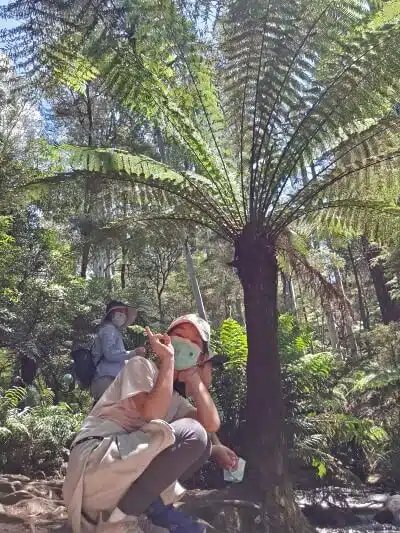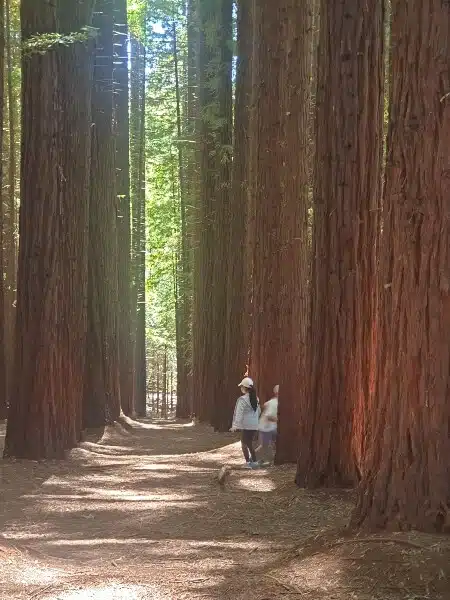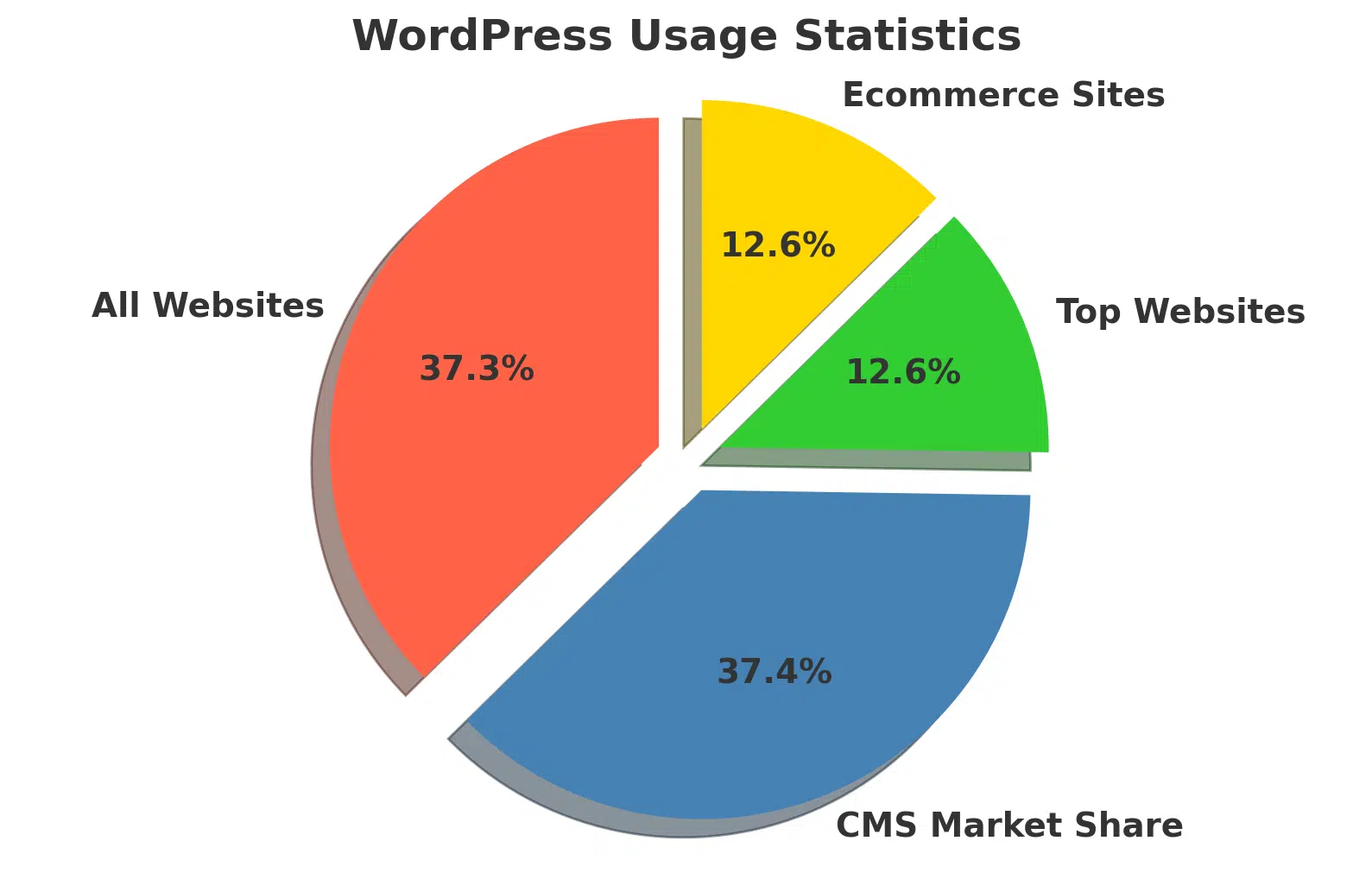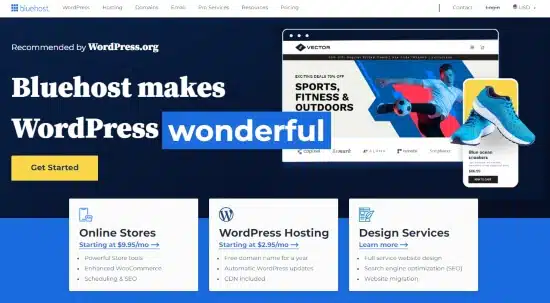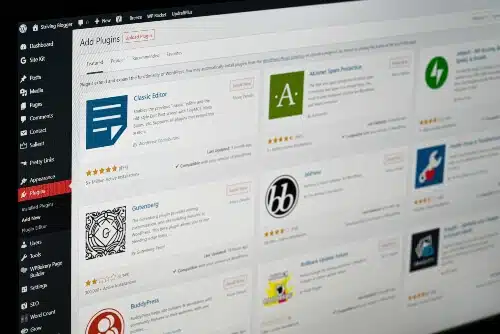Ever thought about starting a travel blog, but your day-to-day commitments have you grounded? You’re not alone.
Dive into this guide to discover the art of virtual voyaging and creating a successful travel blog right from the comfort of your home.
With creativity and the right strategies, you can curate captivating tales and insights without stepping on a plane. Ready to journey into the world of armchair exploration?
Keep reading and let me show you how to start a travel blog without traveling abroad.
Key Takeaways
- Starting a travel blog without constantly traveling is possible and offers a unique perspective on the travel industry.
- You can generate content for your travel blog by leveraging past travel experiences, making day trips and road trips, interviewing friends and family about their travels, becoming an expert in travel planning, focusing on the city or region you live in, or creating a travel news blog.
- To start a travel blog without traveling, choose your niche, create a name for your website and domain that reflects your brand, invest in web hosting with Bluehost which offers affordable packages with essential features, set up your blog using WordPress and customize it to align with your niche.
Save/Pin the image below👇because I often update my posts. So stay informed with this blog “How to Start a Travel Blog” and save it.
How to Start a Travel Blog in 18 Steps
Before I get onto the question “Can you be a travel blogger without travelling“, here is a summary on how to start travel blogging.
| Steps | Brief Description |
|---|---|
| 1. Choose Your Travel Niche | Focus on a specific area of travel you’re passionate about. Research different niches and ensure there’s room for a new blog in your chosen niche. |
| 2. Create a Name For Your Website & Domain | Pick a unique and relevant name that reflects your niche. Consider using the .com extension for a professional look. |
| 3. Invest in Reliable Web Hosting | Choose a hosting platform like Bluehost that offers essential features and supports WordPress. |
| 4. Setting Up a Travel blog with Bluehost | Sign up for a hosting plan, register a domain, set up WordPress, and customize your website’s appearance. |
| 5. Select a WordPress Theme | Choose a theme that’s mobile-ready and aligns with your travel niche. Consider using premium themes for more customization options. |
| 6. Customize Website Elements | Personalize your site’s colors, logo, fonts, images, and graphics to represent your brand. |
| 7. Leverage the Power of Plugins | Install essential plugins like Akismet Anti-Spam, UpdraftPlus, WP Rocket, and All-in-One SEO to enhance your website’s functionality and security. |
| 8. Install Google Analytics And Search Console | Use these tools to track website traffic, monitor your blog’s presence in search results, and gain insights into your audience’s behavior. |
| 9. Publish the Main Pages | Create essential pages like Home, About, Privacy Policy, and Contact to provide information to your readers. |
| 10. Create Categories | Organize your content into categories like Destination Guides, Travel Tips, Food and Drink, etc., to make navigation easier for readers. |
| 11. Keyword Research | Identify popular and relevant keywords in your niche to improve your blog’s visibility in search results. |
| 12. Crafting an Engaging Blog Post Title | Create captivating titles that grab attention and accurately represent your content. |
| 13. Write Your First Travel Blog Post | Share your unique voice, personal stories, travel tips, and other relevant content. Incorporate visuals to enhance the reader’s experience. |
| 14. Incorporating Visuals in Your Posts | Use high-quality images and graphics to make your content more visually appealing and break up text. |
| 15. Learn SEO Skills | Master SEO techniques to improve your website’s ranking in search results. Optimize meta titles, descriptions, use appropriate header tags, and incorporate relevant keywords throughout your content. |
| 16. Promote Your Travel Blog | Use social media, email marketing, and other online platforms to share your content and reach a wider audience. Engage with readers and other bloggers to build a community around your blog. |
| 17. Monetize Your Travel Blog | Explore various monetization methods such as affiliate marketing, sponsored posts, selling digital products, or offering travel consultancy services. Find what aligns best with your content and audience. |
| 18. Maintain and Grow Your Blog | Regularly update your content, engage with your audience, and stay updated with the latest trends in the travel industry. Continuously learn and adapt to ensure the growth and success of your blog. |
This page have some affiliate links. In other words, if you buy from my links, I may get a commission. And some of the images were sources from Unsplash+ (Getty Images, Jason Hawke, Justin Morgan, Philip Oroni, Campaign Creators).
Can You Start A Travel Blog Without Traveling?
Yes. You. Can. To start a travel blog without traveling, focus on local attractions, share past travel experiences, or curate travel content from other sources. You can utilize online research, interviews, and virtual tours to create engaging posts.
Starting a travel blog without the constant motion of traveling is not only possible but also offers a unique perspective on the travel industry.
You can infuse your site with rich narratives from past adventures, drawing upon memories to create inspiring content.
You can even use.
Your day trips and little road trips around your locale provide fresh opportunities for exploration and adventure. With each local destination, you add vibrant images and novel experiences to your blog.
You can turn to.
Family gatherings or casual meetups with friends can serve as gold mines of captivating stories about their travel expeditions.
By harnessing these shared moments, you unfold new horizons for your readers while staying rooted at home.
Just like tuning in to YouTube’s thrilling travel channels stirs up ideas about places to see in foreign lands, it sparks creativity about unexplored corners right within our boundaries.
Different Ways to Generate Content Without Traveling
As mentioned earlier.
There are several ways to generate content for your travel blog without actually traveling.
Such as leveraging past travel experiences, interviewing friends and family, becoming an expert in travel planning, focusing on the city or region you live in, and creating a travel news blog.
A road trip to Mount Dandenong.
Leverage Your Past Travel Experiences
Digging into your past travel experiences can be a goldmine of content for your travel blog.
They could range from family vacations to study abroad trips or even business travels.
Each journey you’ve been on has countless stories waiting to arouse the interest of your readers.
You can relive those moments by illustrating them in detailed narratives, sharing photos, and offering advice based on what you learned during those trips.
Sharing personal anecdotes not only builds authenticity but also helps forge a connection with readers who may have had similar experiences.
It might seem like an ordinary day trip at the local lake, but it could turn out to be someone’s future favorite getaway!
So go ahead and pull out those old scrapbooks, journals, photo albums or Google Photos.
They are a treasure-trove of inspiration for thrilling storytelling on your travel blog.
Make Day Trips and Road Trips
Exploring your local area can yield some fantastic content for your travel blog.
Grab a map and hit the road towards nearby towns, nature reserves, museums, or any other spot of interest.
Both day trips and road trips offer an exciting opportunity to share fresh experiences with your readers while maintaining a close-to-home approach.
They allow you to provide detailed reviews about these evocative places filled with history, culture or amazing sceneries.
It’s all about showcasing those hidden gems that are situated nearer than we sometimes think!
Interview Friends & Family About Their Travel Experiences
One great way to generate content for your travel blog without actually traveling yourself is by interviewing friends and family about their own travel experiences.
This can provide a wealth of valuable information and unique perspectives that will captivate your audience.
By asking them about their favorite destinations, memorable moments, and travel tips, you can create engaging and insightful blog posts that resonate with your readers.
Plus, it’s a fantastic opportunity to learn from the people closest to you while also strengthening your relationships.
So don’t hesitate to reach out and start those interviews – you never know what incredible stories you might uncover!
Become an Expert in Travel Planning
Why not! And it’s fun.
Before jet-setting ayway, I usually plan the trip and the accommodations, and then my Mrs will double check the itinerary so that I don’t ‘overdo’ it.
To become an expert in travel planning, I immerse myself in the world of destinations and itineraries.
By researching various travel resources, Youtube and blogs, I gain insights into the best places to visit, hidden gems, and local tips.
I make a point to stay updated on travel trends and news so that I can provide valuable information to my readers.
Additionally, I utilize online tools like Google Maps and TripAdvisor to plan detailed routes and activities for different types of travelers.
With a strong foundation in travel planning, I can create well-organized itineraries that cater to different interests and budgets.
Focus on the City/Region You Live In
A road trip to Red Forest, Melbourne.
Starting a travel blog without traveling is still possible by focusing on the city or region you live in.
Explore your surroundings and take advantage of the unique experiences your location has to offer.
Go on day trips to nearby attractions and hidden gems, then write about your adventures on your blog.
Whether it’s visiting local landmarks, trying out new restaurants, or attending community events, there are plenty of opportunities to generate content that showcases the beauty and charm of your city or region.
In addition, interviewing friends and family about their travel experiences in the area can provide interesting stories and perspectives for your blog.
They might have visited places you haven’t yet discovered or uncovered secrets about familiar spots that will captivate your readers.
Create a Travel News Blog
Starting a travel news blog is an exciting way to share the latest updates and stories from around the world.
By creating a platform dedicated to travel news, you can provide valuable information and insights to your audience.
Whether it’s reporting on travel trends, sharing breaking news about destinations, or offering tips for travelers, a travel news blog allows you to showcase your writing skills while keeping readers informed and engaged.
With the vast amount of travel-related content available, having a niche focus on news can help set your blog apart and attract a loyal following who are interested in staying up-to-date with all things related to travel.
How to Start a Travel Blog Without Travelling : The Steps
In this section, we will outline the steps you need to take to start your travel blog without actually traveling.
From choosing your niche and creating a domain name to setting up web hosting and customizing your website, we’ve got you covered!
Read on to learn how to start a travel without traveling. And without leaving home.
Step 1 – Choose Your Travel Niche
Choosing a travel niche is a crucial step in starting your travel blog.
It’s important to focus on something you are passionate about and have knowledge of, as this will help you create compelling content that resonates with your audience.
Take the time to research and explore different niches within the travel industry, such as adventure travel, cultural travel, or family travel.
Consider what sets you apart from other bloggers and how you can provide unique perspectives and insights.
Remember to check the competition within your chosen niche to ensure there is still room for a new blog.
Once you’ve found your niche, select a domain name that reflects your blog’s name and niche for branding purposes.
Step 2 – Create a Name For Your Website & Domain
Choosing a unique name for your website and domain is an important step in starting a travel blog without actually traveling.
Your name should be relevant to your niche and reflect the content you plan to create.
Think about what makes your blog stand out and try to incorporate that into your name.
It’s also essential to select a domain name that reflects your blog’s name and niche, as it helps with branding and recognition.
Consider using the .com extension for your domain, as it is widely recognized and gives a professional reputation to your website.
(I’ll show you where you can get a free travel domain name soon.)
Remember, the right name can make a lasting impression on readers and help establish your online presence as a travel blogger.
Step 3 – Invest in Reliable Web Hosting
Investing in web hosting is an essential step in starting a travel blog without actually traveling.
It allows you to create and launch your website, making it accessible to users around the world.
And with most web hosting, you’ll have access to a popular platform, WordPress.
(If you are a numbers kind of person, I’ve got some neat stats for you about WordPress at the end of this travel blog.)
WordPress offers more customization options and advanced functionality to improve your online presence.
Whichever platform you choose, investing in reliable web hosting ensures that your site remains secure, loads quickly, and provides a seamless browsing experience for your audience.
Figure 1.0 – A visual representation of WordPress usage statistics:
- The largest slice represents the percentage of all websites powered by WordPress (65.1%).
- The second-largest slice indicates WordPress’s share in the CMS market (65.2%).
- The third and fourth slices highlight WordPress’s presence in top websites and eCommerce sites, both at 22%.
These figures underscore WordPress’s dominance in various sectors of the web ecosystem.
Why Choose Bluehost For Your Travel Blog?
Bluehost is an excellent choice for web hosting, especially if you’re starting a travel blog without traveling.
They offer affordable packages (from $2.95 a month) that include essential features like SSL certificates and domain protection.
Plus. Bluehost even gives you a free domain, which makes it super convenient for new bloggers like me.
Setting up web hosting with Bluehost is also really straightforward.
They guide you through the process of registering your domain name and getting everything set up.
And most importantly, Bluehost provides a reliable and secure platform for hosting your travel blog.
So if you’re looking for a trusted web host to kickstart your blogging journey, I highly recommend giving Bluehost a try!
| Plan | Pricing | Hosting Features |
|---|---|---|
| BASIC | $2.95/mo* (Save 40%) | 10 GB SSD Storage, 1 Website, Free Domain 1st Year, Custom WP Themes |
| CHOICE PLUS | $5.45/mo* (Save 50%) | 40 GB SSD Storage, Free CDN, Unlimited Websites, Free Domain 1st Year, Custom WP Themes |
| ONLINE STORE | $9.95/mo* (Save 35%) | 100 GB SSD Storage, Free CDN, Unlimited Websites, Free Domain 1st Year, Custom WP Themes, Exclusive Store Theme, Store Analytics |
| PRO | $13.95/mo* (Save 20%) | 100 GB SSD Storage, Free CDN, Unlimited Websites, Free Domain 1st Year, Free Dedicated IP, Custom WP Themes |
Table A – A snap of Bluehost WordPress pricing table for starting a travel blog. For more details, check out the Bluehost pricing card here.
Step 4 – Setting Up a Travel blog with Bluehost
With Bluehost, you can easily and quickly start a travel blog without hassle.
It offers affordable packages that include essential features like SSL certificates and domain protection.
Here are the steps to get started:
- Sign up for a Bluehost hosting plan that suits your needs and budget.
- Select a domain name for your blog.
- Complete the registration process, skip the add-ons and set up your account.
- Create a username and password for your Bluehost dashboard and control panel.
- Go to ‘Hosting’, then ‘Add Site’
- Install WordPress and enter your domain name. Which is a user – friendly platform for creating and managing websites.
- Once WordPress is installed. Customize your website’s appearance by choosing a theme that aligns with your travel niche.
- Personalize your site by adding your logo, selecting colors, fonts, images, and graphics that represent your brand.
- Enhance the functionality of your travel blog by installing must-have plugins such as Yoast SEO or Jetpack.
- Set up Google Analytics and Google Search Console to track visitor traffic and monitor the performance of your blog.
- Publish essential pages such as Home, About, Privacy Policy, and Contact to provide information to your readers.
Read this if you want an ultimate guide How to start a Bluehost WordPress blog in 20 minutes or less.
Step 5 – Select a WordPress Theme
For your travel blog, selecting the right WordPress theme is crucial.
You can opt for the free themes in the WordPress library or go the paid versions.
For blogging beginners who are on a budget, the free themes available are huge.
However, be sure to pick a theme that is both easy to use and mobile ready.
Now, if you do have the budget.
Elegant Themes is a premium theme I use and recommend.
Their themes are designed specifically for blogs and offer a variety of customization options to make your site unique.
With their user-friendly interface, you can easily modify colors, fonts, and layouts to match your brand.
It’s important to choose a theme that is visually appealing and responsive across different devices like smartphones and tablets.
Another helpful plugin is “Smush,” which automatically optimizes images by reducing their file size without sacrificing quality.
Optimizing images plays a significant role in improving website speed and overall user experience.
Step 6 – Customize your website’s colors, logo, fonts, images, and graphics
Customizing your travel blog’s colors, logo, fonts, images, and graphics is an important step in creating your travel blog.
But, I wouldn’t be wasting hours and hours on end to get it perfect. It will never be perfect. In my opinion, it is best to start a travel blog as soon as possible.
And when traffic does increase, you can always improve the design. That said.
Here are some key elements to consider:
- Choose colors that align with the theme and style of your travel blog.
- Design a unique logo that represents your blog’s identity and is easily recognizable.
- Select fonts that are easy to read and match the tone of your content.
- Use high-quality images that capture the essence of your travel niche.
- Incorporate visually appealing graphics to enhance your blog posts.
Step 7 – Leverage the Power of Plugins
Installing essential plugins is an important step in starting your travel blog.
These plugins will enhance the functionality and security of your website.
Here are some essential plugins that every beginner blogger should install:
- Akismet Anti-Spam: It filters out spam comments on your blog, ensuring a clean and professional appearance.
- UpdraftPlus: This plugin automatically backs up your website, protecting your content in case of any issues or accidents.
- WP Rocket: It improves the speed and performance of your website by caching files and reducing load times.
- All-in-One SEO: This plugin optimizes your blog posts for search engines, helping you rank higher in search results
Step 8 – Install Google Analytics And Google Search Console
Two very important (yet FREE) data assets for every travel blog.
Installing Google Analytics and Google Search Console is an important step in starting any blog.
These tools provide valuable insights and data to improve your blog’s performance:
- Google Analytics tracks website traffic, visitor behavior, and marketing effectiveness.
- Google Search Console monitors your blog’s presence in search results and provides data on search queries and impressions.
- You can install these tools by following the platform’s instructions.
- Both tools require website verification for accurate data tracking.
- Regularly monitoring and analyzing data from these tools helps you make informed decisions about content creation and marketing strategies.
Step 9 – Publish the main pages
The main pages on your travel blog is crucial for establishing credibility and providing essential information to visitors.
These pages play a vital role in creating a positive first impression and building trust with your audience.
Here are the main pages you should prioritize:
- Home: The home page serves as the front door to your travel blog. It’s where visitors land when they first arrive, so it needs to be visually appealing and provide a clear overview of what your blog offers.
- About: The about page is where you introduce yourself and share your story as a travel blogger. Let readers know who you are, why you started the blog, and what makes your content unique. This page helps build a connection with your audience.
- Privacy Policy: The privacy policy page is essential for transparency regarding how user data is collected and used on your website. It lets visitors know that their personal information is safe and protected.
- Contact: The contact page allows readers to get in touch with you easily. Include an email address or contact form for inquiries, collaboration opportunities, or feedback from your audience.
Step 10 – Create Categories
To make it easier for readers to navigate your travel blog, create categories. This will help organize your content and make it more accessible.
Some categories you can consider, for example, are:
- Destination Guides: Provide detailed information about specific travel destinations, including attractions, activities, and local tips.
- Travel Tips: Share practical advice and tips for planning trips, packing efficiently, saving money, and navigating different cultures.
- Food and Drink: Highlight local cuisines and beverages from around the world. Share restaurant recommendations, recipes, and food-related experiences.
- Adventure Travel: Focus on adrenaline-pumping activities such as hiking, skiing, surfing, or bungee jumping.
- Budget Travel: Offer money-saving tips, budget-friendly accommodations, and affordable destinations for travelers on a tight budget.
- Solo Travel: Cater to solo travelers by sharing safety tips, destination suggestions, and personal stories about traveling alone.
- Family Travel: Provide family-friendly itineraries, child-friendly accommodations, and tips for traveling with children.
- Cultural Experiences: Explore different cultures through festivals, traditions, art exhibits, museums, or historical sites.
- Road Trips: Guide readers on scenic routes to take by car or motorcycle while providing suggestions for stops along the way.
- Outdoor Activities: Discuss outdoor pursuits like hiking trails, camping spots, national parks or wildlife sanctuaries in various locations.
Read this if you want an ultimate guide How to start a Travel Blog And Make Money with no coding skills.
Step 11 – Keyword Research
Keyword research is a crucial step when starting a travel blog without traveling.
It helps you identify the right keywords to target in your content, making it easier for your blog to be found by search engines like Google.
By conducting keyword research, you can discover what topics and phrases are popular within your chosen travel niche.
As well as, finding those underserved keywords that are overlooked by competitors. That is, keywords that are less competitive.
This allows you to create content that resonates with your target audience and attract more organic traffic to your blog.
So, take the time to explore different keywords related to your niche and incorporate them strategically into your blog posts for better visibility and engagement.
If you’re on a budget, you can use free tools like Ahref keyword generator or Keyword Tool to get started. (Just don’t expect the tools to give you everything on a silver platter.)
For a more in-depth analysis and an easier user experience, check out SE Ranking.
Step 12 – Crafting an engaging blog post title
An engaging blog post title is a key element in capturing the attention of readers and drawing them into your travel blog.
A well-crafted title can make all the difference in whether someone decides to click on your article or scroll right past it.
It’s important to choose words and phrases that are captivating, relevant, and enticing, as this will not only attract readers but also improve the visibility and reach of your blog.
By incorporating keywords related to your content, you can increase the chances of ranking higher in search results and driving more traffic to your travel blog.
So take some time to brainstorm catchy titles that accurately represent what your article has to offer – it’s worth putting in the effort for a title that grabs attention!
Step 13 – Write Your First Travel Blog Post
I’m excited to share with you the next step in starting your travel blog: writing your first blog post!
This is where you can showcase your unique voice and share your passion for travel.
Remember, you don’t need to have traveled recently to write an engaging post.
(Writing any blog post is a huge topic. Here’s a post on How to Write Your First Blog Post, where I cover simple tips for nailing your blog post.)
You can draw from your past experiences or even research and highlight a destination that you’re dreaming of visiting in the future.
Share personal stories, travel tips, or recommendations for places to visit.
Don’t forget to incorporate visuals like photos or videos to make your post more visually appealing and captivating for readers.
Step 14 – Incorporating visuals in your posts
Using visuals in your blog posts will improve the reader’s experience and break up the wall of text.
It just makes it a more pleasant experience to. Read.
They not only make your content more visually appealing, but also grab the attention of your readers.
Persoanlly, using visuals help me convey information in a more effective way and make my posts easier to understand.
Whether it’s showcasing beautiful destinations or highlighting unique experiences, visuals give my audience a better idea of what to expect.
By using high-quality visuals, you can establish credibility and professionalism for you blog, making it stand out from the crowd.
Step 15 – Learn SEO Skills
This ‘How to start a Travel Blog Without Traveling’ guide is not complete without me touching on the topic of SEO.
You see. SEO is an essential skill to have to start a travel blog.
Even if you’re not going to rely on SEO, applying the basics will help attract search engine organic traffic.
I mean, who wouldn’t want extra traffic.
Search Engine Optimization (SEO) helps your travel blog get noticed by search engines like Google, increasing your chances of attracting more readers and boosting your visibility online.
By mastering SEO techniques, you can improve your website’s ranking in search results and drive organic traffic to your blog.
This includes optimizing meta titles and descriptions, using appropriate headers tags (H1, H2), incorporating relevant keywords throughout your content, and ensuring a user-friendly website design. (More on that next.)
Learning these SEO skills will help you effectively optimize your travel blog and reach a wider audience who are interested in the content you have to offer.
As well, understanding how to conduct keyword research is another important skill to learn when it comes to SEO.
By conducting thorough keyword research using tools like Keyword Tool or Google Keyword Planner, you can identify search terms related to travel that people are actively searching for.
Key Points of On-Page SEO
In on-page SEO, important elements include meta titles, meta descriptions, H tags, introduction-content-conclusion structure, blog post URLs and image file names. LSI keywords are also crucial for optimizing your content.
So, let’s talk where you should add the keywords.
Add the Keyword in the Meta title
Meta title, meta description, and H tags are crucial elements for optimizing your travel blog’s on-page SEO.
These components play a significant role in improving your blog’s visibility and ranking in search engine results.
The meta title is the headline that appears in search engine listings and should include the main keyword (or even keywords) that describe your travel blog accurately.
For example. My aim for this blog to rank for the keyword, how to start a travel blog without traveling.
And one of the best place to include this keyword is in the meta title.
(Which reads as, How to Start a Travel Blog Without Traveling: The Complete Guide)
This helps attract readers who are searching for specific topics related to travel.
Add the Keyword in the Meta description
On the other hand, the meta description provides a concise summary of your blog’s content, enticing readers to click through and explore further.
It is essential to craft a compelling meta description that incorporates relevant keywords to capture the attention of potential visitors.
Again, I would add the main keyword (how to start a travel blog without traveling) in the meta description.
Including other relevant keywords. Only if it makes sense to.
Add the Keyword in the H tags
H tags, or heading tags, are HTML tags used to structure headings and subheadings within your blog posts effectively.
They help organize your content and make it easier for both readers and search engines to understand the hierarchy of information on your page.
By using H1 tags for main headings followed by H2, H3, etc., you can create a clear structure that signals what information is most important within each section.
That said.
- You should include the main keyword in the H1 tag;
- For optimal SEO, be sure to add each target keyword at least once in an H2 tag;
- And, incorporate variations or synonyms in H3 tags to enhance relevancy without overdoing it.
Add the Keywords in the Travel Blog content
Sprinkle you main keyword and other relevant keywords in the following areas:
- Introduction: Insert your target keywords in the initial 100 words of the blog post.
- Content: Insert your target keywords between 2 to 4 times throughout the content of your travel blog. But it has to be distributed evenly.
- Conclusion: Insert your target keywords in the last 100 words of the blog post.
Add the Keywords in the Blog Post URL
To optimize your travel blog for search engines, it’s important to pay attention to details like the blog post URL and image file name.
When creating a URL for your blog post, use descriptive keywords (or the main keyword) that accurately represent the content.
Take for example this blog. The blog post contains the main keyword – ‘how to start a travel blog without traveling‘.
This will help search engines understand what your post is about and improve its visibility in search results.
Add the Keywords in the Image file name
Similarly, when naming your image files, choose relevant keywords that describe the image or its subject matter.
As well, you can add a keyword in the ALT tag.
However, be sure the keyword is related to the image, and not just used for keyword stuffing.
By doing so, you can enhance the overall SEO of your travel blog and attract more organic traffic.
LSI keywords
LSI (Latent Semantic Indexing) keywords are words and phrases that are related to a specific topic or keyword.
They help search engines to understand the content of a webpage and improve its relevance.
For example, if you are writing a blog post about “healthy eating”, LSI keywords could include “nutrition,” “diet,” “exercise,” and “wellness.”
By using LSI keywords in your travel blog post, you can improve its contextuality, credibility, and search engine rankings.
This can help to drive more organic traffic to your blog and increase its visibility.
Remember this: It’s essential for your content to be easily understood. Avoid shoving keywords in places where they don’t fit naturally. Always prioritize writing for your audience, ensuring the content is clear and engaging.
Step 16 – Promoting Your Travel Blog
When your blog is live, it’s time to give it some exposure.
You can do this by promote it through email marketing, Pinterest marketing, social media marketing and guest blogging on relevant blogs in your niche.
Start With Email Marketing
Email marketing is a highly recommended strategy for promoting your travel blog, especially if you don’t have the opportunity to travel extensively.
It allows you to attract an audience and generate interest in your blog by sharing travel articles, updates, and tips with subscribers.
By utilizing email marketing, you can build relationships with your readers, keeping them engaged and eager for more content.
Better yet. It’s an effective way to drive traffic to your blog and increase its visibility within the blogging community.
Don’t underestimate the power of email marketing when it comes to growing your travel blog without actually traveling yourself!
Pinterest Marketing
This is a powerful platform for promoting your travel blog, even if you haven’t traveled yet.
By creating visually appealing pins and utilizing keywords in your pin descriptions, you can attract more visitors to your blog.
Conducting keyword research will help you find popular topics within the travel niche that you can write about and promote on Pinterest.
Remember to optimize your profile with relevant keywords to improve visibility.
Make sure to create eye-catching pins that entice users to click through and read your blog posts.
With strategic planning and consistent pinning, Pinterest can be an effective platform for driving traffic to your travel blog.
For a complete walk through, check out my step by step guide on How to Use Pinterest for Blogging now.
Social Media Marketing
Whether it is Meta, Instagram, X, or Tik Tok, pick one social platform, create a business page and start posting engaging content. Regularly.
And be sure to direct traffic to your travel blog.
Be a Guest blogger on Relevant Blogs
Guest blogging on relevant blogs is a fantastic way to promote your travel blog, especially if you’re just starting out.
Even if you haven’t traveled extensively, you can still contribute valuable content and gain visibility within the travel community.
By sharing your insights, tips, and expertise on other blogs that align with your niche and target audience, you can attract new readers and potentially drive more traffic to your own site.
Remember to choose blogs that are relevant to your travel niche and offer unique perspectives or experiences.
But be warned. This is a numbers game.
You will have to reach to as many blog as possible to get a positive response. So be patient.
One more thing. Be sure to reach out to bloggers with the intention to add great value for their readers.
Being a guest blogger allows you to tap into existing audiences and expand your reach without needing extensive travel experience of your own.
Step 17 – Monetize Your Travel Blog
Monetizing your travel blog is an essential step in turning your passion into a profitable venture.
By utilizing affiliate programs, displaying ads, and seeking sponsorships and partnerships, you can start earning income from your blog.
Affiliate programs
Affiliate programs are a great way to earn money from your travel blog.
By partnering with brands and promoting their products or services, you can earn a commission for every sale that is made through your affiliate links.
It’s important to choose affiliate programs that align with your travel niche and offer high-quality products or services that your audience will be interested in.
When selecting affiliate programs, consider factors such as commission rates, cookie durations, and payout thresholds.
By strategically incorporating affiliate links into your blog posts and sharing them on social media, you can start earning passive income while providing valuable recommendations to your readers.
Displaying Ads
Displaying ads on your travel blog can be an effective way to monetize your content and earn passive income.
By attracting a specific audience through your chosen travel niche, you can increase the chances of advertisers wanting to place their ads on your site.
Before getting started, it’s important to check out the competition within your niche and determine the potential profitability of displaying ads.
Additionally, selecting a domain name that reflects your blog’s name and niche is crucial for branding and recognition, which can impact the success of displaying ads.
Once you have launched your website, you’ll have a platform ready to showcase those ads and start earning revenue.
Sponsorships & Partners
Sponsorships and partnerships are an excellent way to monetize your travel blog, even if you’re not currently traveling.
By building relationships with brands in the travel industry, you can collaborate on sponsored content that aligns with your niche and values.
This can include writing reviews, promoting products or services, and featuring sponsored experiences.
Also, affiliate partnerships can be a lucrative option for earning commissions by promoting relevant products or services on your blog.
Remember to choose sponsorships and partnerships that resonate with your audience and enhance their travel experience.
Step 18 – Maintaining And Growing Your Blog
To keep your travel blog thriving, it’s important to regularly update your content, engage with your audience, and track your results.
Find out the key strategies for maintaining and growing your blog in this comprehensive guide.
Be Consistent
Regularly updating content is key to maintaining and growing your travel blog.
It ensures that your readers always have something new to engage with, keeping them coming back for more.
By consistently providing fresh and relevant information, you can establish yourself as a reliable source in the travel blogging community.
Also, search engines favor websites that are regularly updated, which can lead to higher rankings and increased visibility for your blog.
So what is the ideal blogging frequency? Here’s an article I wrote How Often Should You Post on a Blog. I go into detail the factors that will determine your optimal blogging frequency.
So, make it a priority to create and publish new posts on a consistent basis to keep your audience engaged and attract new visitors to your travel blog.
Engage, Engage
Engaging with your audience is key to the success of your travel blog.
By interacting with your readers, you can build a loyal following and create a sense of community around your blog.
Responding to comments on your posts shows that you value their input and encourages further engagement.
You can also ask questions in your blog posts or on social media to encourage discussion and gather feedback from your audience.
As well, consider hosting contests or giveaways as a way to reward and engage with your readers.
By actively engaging with your audience, you can foster relationships and create a thriving community around your travel blog.
Track And Measure
Tracking your results is a crucial aspect of maintaining and growing your travel blog.
It allows you to understand what strategies are working well and identify areas that need improvement.
By keeping track of important metrics such as website traffic, engagement, and conversion rates, you can gain valuable insights into how your blog is performing.
With this data-driven approach, you’ll be able to make informed decisions about the direction of your blog and adjust your strategies accordingly.
So, don’t forget to regularly track and analyze your results to measure the success of your blog and continue its growth.
Utilizing Resources to Create Content for Your Travel Blog
Utilize resources like photos, writing tools, and books to create captivating content for your travel blog.
Photos
Using high-quality and visually appealing photos is vital when creating content for a travel blog without actually traveling.
Photos help to bring destinations and experiences to life, capturing the essence of different places and allowing readers to imagine themselves there.
By utilizing resources like stock photo websites or your own personal collection, you can enhance your blog posts with stunning visuals.
This helps to engage your audience and make them feel like they are experiencing the destination alongside you.
Images have the power to evoke emotions and spark wanderlust.
So. Don’t underestimate their importance in making your travel blog captivating and inspiring.
Writing Tools
I love using different writing tools to help me create engaging and polished content for my travel blog.
One of my favorite tools is a grammar checker, which helps me catch any spelling or grammar mistakes before publishing.
It’s also important to have a reliable word processor that allows you to easily format and organize my blog posts.
You could even use AI tools like ChatGpt or even Perplexity to help you plan, research and create outlines for your next travel blog post.
Whether you like it or not, these AI tools are here to stay. So why not use them to streamline your content creation.
Another helpful tool is a plagiarism checker, which ensures that all of my content is original and unique.
With these writing tools at hand, I can confidently produce high-quality articles for my travel blog without any worry about errors or duplicate content.
Books
Books have always been a valuable resource for travel bloggers.
They can serve as inspiration, provide practical tips and advice, and offer insight into different cultures and destinations.
Reading travel memoirs and guidebooks can help you gain new perspectives and ideas for your own blog posts.
Also, books on photography techniques or writing skills can enhance the quality of your content.
Don’t underestimate the power of a good book when it comes to fueling your creativity and expanding your knowledge as a travel blogger.
Books are like windows to the world, offering you endless possibilities for content creation without even leaving your home.
Starting a Travel Blog Without Traveling – FAQs
Still have questions on how to start a travel blog wthout traveling?
Can I start a travel blog without actually traveling?
Yes, you can start a travel blog without physically traveling by focusing on topics such as travel tips, destination research, and sharing your past experiences.
What are some creative ways to gather content for my travel blog if I can’t travel?
If you can’t travel, you can still gather content for your travel blog by exploring local attractions in your area, interviewing other travelers or locals, using stock photos/videos with proper attribution, and creating informative guides based on extensive research.
How can I connect with other travelers in the blogging community if I haven’t traveled yet?
You can connect with other travelers in the blogging community through social media platforms like Instagram or Twitter by engaging with their posts, joining relevant online communities or forums, attending virtual conferences or webinars focused on blogging and networking.
Is it possible to monetize a travel blog that doesn’t involve actual traveling?
Yes, it is possible to monetize a travel blog even if you haven’t traveled by focusing on affiliate marketing (promoting products/services related to travel), sponsored posts/reviews from companies that align with your niche audience’s interests, and creating digital products such as ebooks or online courses about various aspects of planning and organizing trips.
Why Use WordPress for Starting a Travel Blog?
Here are some important statistics related to WordPress usage:
- WordPress is used by 43.2% of all websites on the internet. (Source 3,4,6)
- WordPress usage has increased an average of 12% per year since 2011. (Source 3,6)
- WordPress is used by 65.2% of all websites using a content management system
- The official WordPress plugin directory contains about 60,000 free plugins(Source 1)
- There are about 31,000 WordPress themes in total, both free and premium. (Source 1)
- Over 455 million WordPress websites exist. (Source 5)
- The anti-spam plugin Akismet has blocked over 450 billion spam comments on over 6 million WordPress website. (Source 5)
- The English version of WordPress is the most popular one. (Source 5)
- Non-English WordPress downloads outranked the English ones in 2018.(Source 5)
- WordPress powers 22% of the top 1 million ecommerce sites in the world through WooCommerce. (Source 6)
These statistics show that WordPress is a widely used platform for building websites and ecommerce sites, with a large number of plugins and themes available for customization.
The platform has seen consistent growth in usage over the years and is a popular choice for content management systems.
I can tell you this. You have to use WordPress to start a travel blog.
Starting a Travel Blog – Sources
How to Start a Travel Blog Without Traveling Blog – The Wrap Up
Starting a travel blog without traveling is not only possible but also an opportunity to tap into your past experiences and explore your local surroundings.
By leveraging day trips, road trips, and interviewing friends and family about their travels, you can create captivating content for your blog.
Remember to choose a specific travel niche that aligns with your passion and expertise.
With the right domain name and web hosting provider like Bluehost, you’ll be well on your way to creating a successful travel blog that resonates with readers around the world.
Now that is how to start a travel blog without traveling.
Disclosure: This post may contain affiliate links, which means I’ll receive a commission if you purchase through my links, at no extra cost to you. Please read full disclosure for more information.
You Might Want to Check This Out Too
Resources To Grow Your Business With
Pinteresting
Struggling to get traffic from Pinterest? Pinteresting Strategies 2025 by Carly Campbell reveals a manual pinning method that works—even with algorithm changes.
This course walks you through step-by-step strategies to pin effectively, increase engagement, and grow your blog without relying on expensive schedulers.
Carly has used this exact system to bring in 100,000+ page views in just months, and now she’s sharing it with you.
Stop guessing and start seeing real results today!
Bluehost
Bluehost is a great starting point for beginners or bloggers who want to switch to a reliable web hosting service. And it gives you the best bang for your buck - starting at $2.95 a month*.
With the entry-level hosting plan, you'll get a high up-time, reliable customer support, FREE domain name (first year) and 30 day money back guarantee.
You can sign up with Bluehost here.
WPX Hosting
It's a web-hosting service I love using. It specializes in WordPress hosting, and depending on what package you opt for, you can host 5 or more sites on one account. The best bit is - the quick turnaround in support is top notch.
For bloggers who have an established blog, this is a fantastic option.
You can learn more about this service here.
Aweber
Building an email list of a growing audience is essential for the longevity of any business. This autoresponder service is easy to use, and it is a great starting point for someone looking to kickstart their email campaign.
Hi, I’m Jason Ou (surname aka, Oh). I am a Solopreneur and Blogger. My mission is to help fellow entrepreneurs (like you) to profit from their passion online. Let’s connect on Facebook now.


